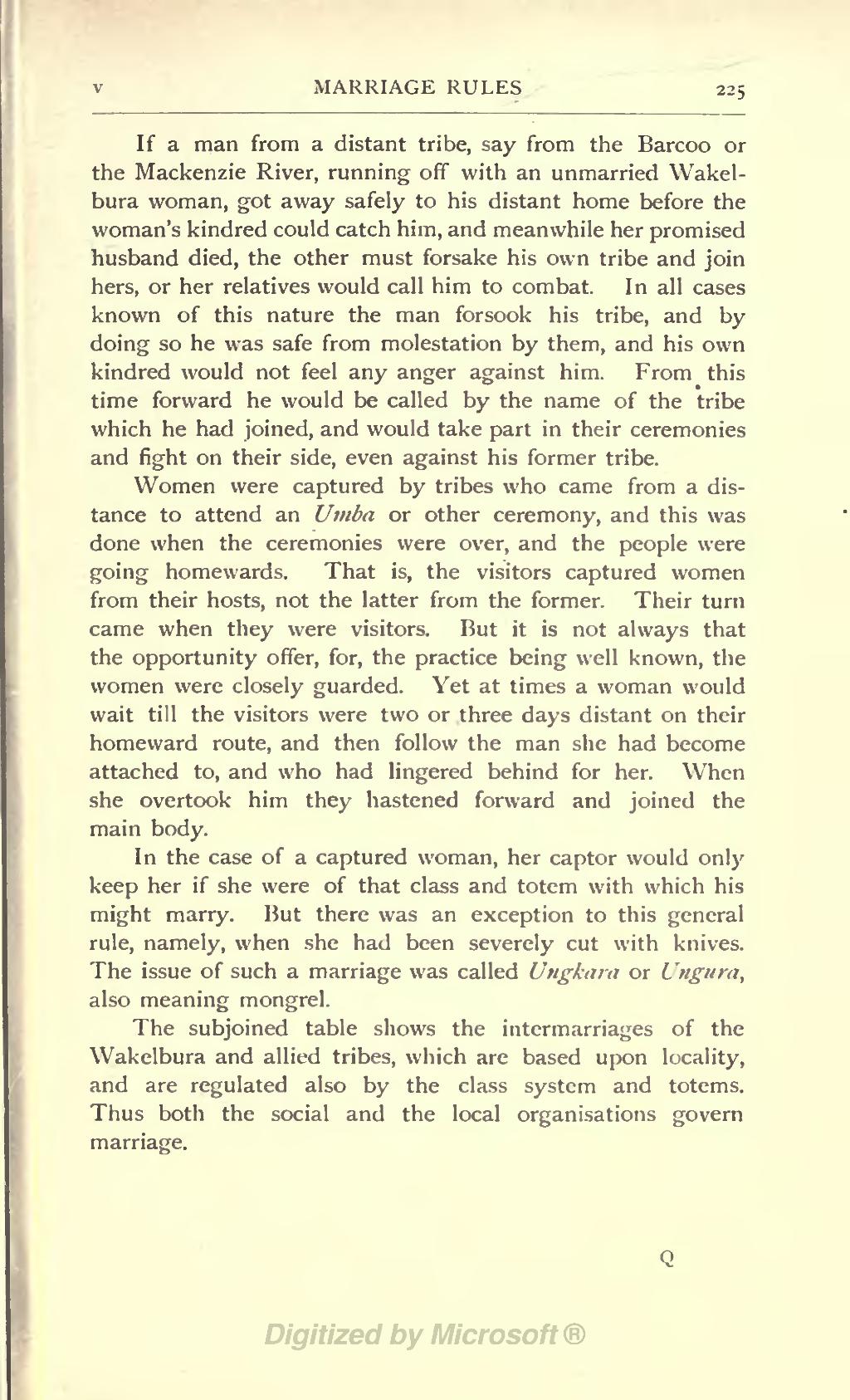If a man from a distant tribe, say from the Barcoo or the Mackenzie River, running off with an unmarried Wakelbura woman, got away safely to his distant home before the woman's kindred could catch him, and meanwhile her promised husband died, the other must forsake his own tribe and join hers, or her relatives would call him to combat. In all cases known of this nature the man forsook his tribe, and by doing so he was safe from molestation by them, and his own kindred would not feel any anger against him. From this time forward he would be called by the name of the tribe which he had joined, and would take part in their ceremonies and fight on their side, even against his former tribe.
Women were captured by tribes who came from a distance to attend an Umba or other ceremony, and this was done when the ceremonies were over, and the people were going homewards. That is, the visitors captured women from their hosts, not the latter from the former. Their turn came when they were visitors. But it is not always that the opportunity offer, for, the practice being well known, the women were closely guarded. Yet at times a woman would wait till the visitors were two or three days distant on their homeward route, and then follow the man she had become attached to, and who had lingered behind for her. When she overtook him they hastened forward and joined the main body.
In the case of a captured woman, her captor would only keep her if she were of that class and totem with which his might marry. But there was an exception to this general rule, namely, when she had been severely cut with knives. The issue of such a marriage was called Ungkara or Ungura, also meaning mongrel.
The subjoined table shows the intermarriages of the Wakelbura and allied tribes, which are based upon locality, and are regulated also by the class system and totems. Thus both the social and the local organisations govern marriage.
